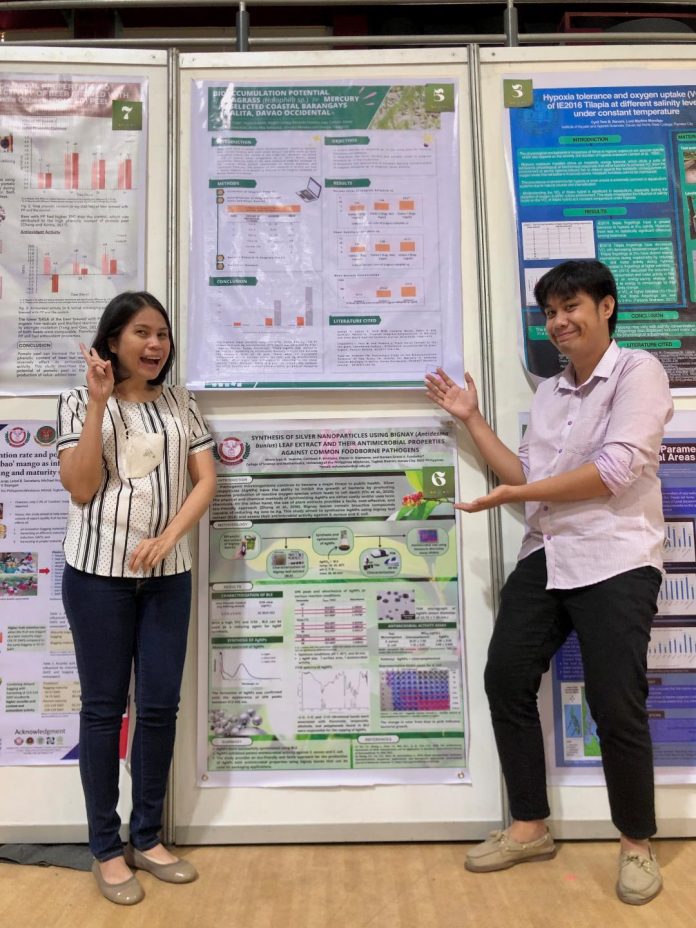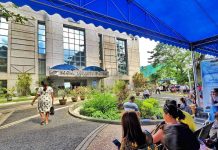Researchers from the University of the Philippines (UP) Mindanao presented industrial and practical solutions to food and related sectors at the 35th anniversary celebration of the Southern Mindanao Agriculture and Aquatic Resources Research and Development Consortium (SMAARRDEC) on August 17, 2022.
Dr. Melvin Pasaporte’s pitch in the Technology and Industry Forum focused on convincing investors to invest in the UP Mindanao lactic acid technology, which promised a more cost-efficient process of producing lactic acid locally. Lactic acid, he said, has applications in the food, chemical, pharmaceutical, and polymer industries, and the technology presented an opportunity for investors to invest in potentially the first commercial lactic acid production plant in the country.
In fisheries, Mr. Remie Aurelio’s pitch in the same forum focused on minimizing the deterioration of coral reef ecosystems that would affect fishing and livelihoods in the Davao region. He said that wastewater discharge from industrial and agricultural activities causes this deterioration. Therefore, he advised local government units to minimize such discharges or to propagate helophyte plants and reeds which can filter wastewater before they reach the sea.
In the research category for the oral presentation, Assistant Professor Kriza Faye Calumba described a recent study on the production of a probiotic beverage from marang, an abundant but underutilized fruit. Mixing a Lactobacillus strain previously isolated from nipa into the raw marang juice produced a non-dairy probiotic drink that has potential health benefits, she said.
In the scientific poster presentations, Prof. Calumba detailed the process of brewing beer with added pomelo peel, an abundant fruit by-product that remains underutilized. The results describe the beer to have antioxidant properties and high total phenolic content, adding value to the beverage.
Angelyn Lacap’s poster shared their team’s research that using an innovative fruit bag in wrapping ‘Carabao’ mangoes at the proper maturity stage improves the quality of the fruit and contributes to the export market—valued at PHP 756M in 2020. For example, bagging mangoes at 74-75 days after flower induction (DAFI) produced better quality and lower degree of postharvest diseases. Combining this with harvesting at 113-114 DAFI results in fruit with higher ascorbic acid and antioxidants. Finally, using Taiwan paper bags instead of newspaper bags significantly increases the proportion of export-quality grade mangoes.
Khent Ivan Duerme and his team’s scientific poster focused on the utilization of bignay leaves for the synthesis of silver nanoparticles (AgNPs) with antimicrobial properties. Synthesizing AgNPs is costly or uses toxic chemicals, so bignay leaf extract (BLE) was considered for it is a cheap, environmentally-friendly, and underexplored alternative. AgNPs synthesized from BLE exhibited antimicrobial activity comparable to a commercial antibiotic and can be used for food packaging applications.
The UP Mindanao researchers adhered to the celebration’s theme of “Strengthening Agriculture, Aquatic, and Natural Resources (AANR) Industries and Communities towards a resilient and economically competitive Davao Region.”
SMAARRDEC comprises 26 national government agencies, local government units, higher education institutions, and NGOs and is supported by the Department of Science and Technology’s Philippine Council for Agriculture, Aquatic, and Natural Resources Research and Development (DOST-PCAARRD).
DOST-PCAARRD Executive Director Reynaldo Ebora said, “May we continue to strengthen our partnership in undertaking relevant activities that will truly create life-changing impacts on the lives of our country’s farmers and fisherfolks.”
SMAARRDEC Chairperson Lourdes Generalao, president of the University of Southeastern Philippines, said, “I look forward to seeing what is in store for our SMAARRDEC and the individuals and communities that it empowers.”
Davao City Mayor Sebastian Duterte, for his part, stated, “Through your help, we can further expand the information and technologies needed to sustain local production and promote sustainable development here in Mindanao.”







